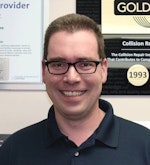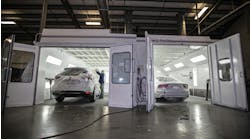The brain is amazing. It can remember phone numbers, life events, faces, passwords, names and tasks. The amount of memories that can be stored in a person’s brain is awe inspiring. Given the correct environmental trigger, the brain can recall amazing things in great detail. This is why doctors and nurses study so hard in medical school. Its to teach their minds all the pertinent facts and procedural steps to help another human in need. The capability of medical professionals speaks volumes to the capacity of the human brain.
Estimators and technicians are akin to medical professionals. They are highly trained professionals that practice their trade day in and day out. With this training and experience comes knowledge and the ability to recall and remember certain things from past repairs’ successes and failures. This, however, is where the differences emerge between collision and medical professionals. Let’s be clear, there is a huge difference between knowing how to do a job and knowing how to do the job.
There is a common misconception that having the skills to repair a vehicle equals having the knowledge of the specifications to fix the vehicle. It is expected that a technician knows and has the proper skills to repair plastics, bump metal, and cut, weld and grind. These are job skills that can be applied to any repair. This would be akin to knowing how to do a job. Knowing how to do the job requires acute knowledge of the required procedures and specifications from the OEM. Repair research is an absolute necessary part of any repair. There are no longer any simple repairs, and this is where the friction begins between shops and insurers. Simply removing or replacing a bumper cover, headlight, or mirror can necessitate the calibration or aiming of an ADAS system. But the friction between shops and insurers goes much deeper than ADAS. The knowledge of the OEM procedures is temporary. Procedures change over time and the only way to know they change is to read them. Memorization works for motor skills and techniques but is ineffective when performing safe and proper repairs.
Skills for a profession can be taught in schools, gleaned from webinars, and learned directly through hands on experience on the job. Estimating is a skill that is taught in schools, learned through trial and error and is assisted by on the job mentoring. Collision technicians learn skills in many of the same ways. These skills are what make estimators and collision techs repair professionals. But it doesn’t mean that they know how to do the job when the next car rolls into the shop. This is why receiving compensation for repair research is becoming more prevalent.
There are only 206 bones in the human body, compared to the average car which has 30,000 pieces. The main variability in humans is gender, whereas vehicle variables are seemingly endless. OEM procedures are critical to safe, complete, and efficient repairs that meet the customer’s needs and preserve automaker brand loyalty. It would be unrealistic to believe that anyone could memorize an entire OEM’s structural, suspension, ADAS and restraint system procedures. It wouldn’t even be reasonable to believe that a person could successfully memorize all the procedures for even one model within an OEM’s line up. There is simply too much information, and too much variability. Repair procedures are updated over time, therefore, relying on memory for weld counts, locations, attachment methods, measurements and materials is simply a recipe for catastrophic failure.
I-CAR and OEMs teach that repair procedures must be researched and documented for each repair. Estimating systems acknowledge this step as a not included operation. Research has too many variables to be included into any parts replacement labor time. OEMs write procedures differently. Some provide removal, overhaul, and installation in one long article, while others write separate documents for each phase of replacement. Within OEM procedures there are often references to other procedures that are required, such as battery disconnect, prerequisite steps for access, and calibrations or initializations. Even a small repair can require 70+ pages of procedures to be documented and repaired correctly. Seventy pages is a lot of information. The average human reads at a rate of two minutes per page for non-technical reading. Seventy pages would take more two hours to read! This poses a challenge. During the repair cycle the estimator, body, paint, mechanical and ADAS technicians must access and review procedures to ensure the vehicle is repaired to specification. This takes time. Time is money. Technicians are worth money. Liability costs money. Lives are beyond money.
Together we serve humans in need. Our industry is full of highly trained and skilled people seeking to do what is right. Just as reading an OEM procedure provides clarity to a technician, understanding the difference between knowing how to do a job and knowing the specifications to do the job provides value. And that is something worth reading about.




